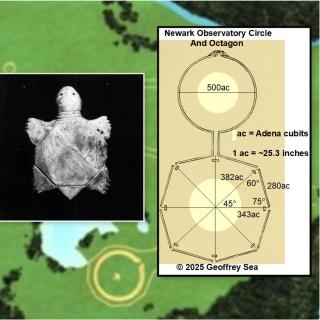Nearly 50 years of uranium enrichment have brought serious radioactive contamination to what was once lovely countryside at Piketon, Ohio. The misidentified Portsmouth Nuclear Site (PORTS) at Piketon is operated by the U.S. Dept. of Energy (DOE.) The DOE unbelievablely brought reprocessed high-level radioactive waste to the site and ran it through the enrichment buildings for years, contaminating PORTS with plutonium and other transuranic elements – some of the most dangerous entities on earth.
Cleanup of the site has begun, but it has uncertain funding and may not be completed for years. The DOE is violating its own requirements by refusing to perform an Environmental Impact Statement to determine the necessary depth of cleanup.
The Southern Ohio Diversity Initiative (SODI) was designated by the DOE as an Ohio nonprofit Community Reuse Organization in 1997. The purpose of SODI is ‘to advance, encourage, and promote the industrial, economic, commercial, and civic development of Pike, Jackson, Ross, and Scioto Counties.” They are looking to bring new industry to the PORTS site.
What types of industry would be willing to locate on this compromised site? The price of clean rural land in Southern Ohio is not high. Dirty and polluting industries are not picky. The Sierra Club has been extremely concerned that future economic development at the site could saddle the people of Southern Ohio with a continuing barrage from some of the nation’s worst polluters.
In January, 2018, SODI presented its recommendations to the public. Here is what they recommend, along with our evaluation.
1. Natural Gas: The Sierra Club opposes construction of new natural gas-burning power plants. The world needs to phase out the burning of fossil fuels to avoid catastrophic climate chaos. At the same time, fracking for natural gas is polluting rivers, land and water and has the potential to more-or-less permanently contaminate every aquifer over which it occurs. Ditto the use of natural gas to fuel new industry.
2. Biomass (e.g., wood chips): Wood is the only biomass that has enough concentrated energy to be economic to burn on an industrial scale. Wood is heavy and expensive to ship any great distance. When this type of facility was proposed for Southern Ohio in the past, it was estimated that all the trees in Southern Ohio would be burned in a few years of operation.
3. Municipal Solid Waste (MSW): MSW incinerators have been closed all over the nation. The Sierra Club worked with other organizations to get Columbus’ MSW incinerator closed back in the 1990s. It was discovered that incineration generates dioxins and dibenzofurans which, outside of radioactivity, are the deadliest substances on earth. This was not understood when incinerators were first constructed.
4. Chipped Tires: Ditto MSW above, except that tires contain heavy metals and numerous other hazardous substances. Burning tires is so toxic and hazardous that they are banned from municipal solid waste and landfills.
5. Nuclear Fuel: This proposal is unclear. Could SODI possibly be talking about bringing in high-level radioactive waste (HLW)? HLW is the irradiated (used, or spent) nuclear fuel from nuclear power plants. Right now, the DOE is urgently looking for “interim” storage sites for this waste, and they are looking for consenting communities. Any interim storage site would in reality have this waste permanently.
6. Hydrogen Production (for various uses): The source of hydrogen is natural gas, which is methane, which has the chemical formula CH4. Hydrogen is another way of storing the energy from natural gas. Overall the use of hydrogen it is not very practical, because it takes energy to convert natural gas to hydrogen, when most industries can just use natural gas. Astonishingly, SODI proposes using the resulting hydrogen to fuel the same dirty processes that they propose to be fueled by natural gas.
7. An Advanced Nuclear Reactor: Nuclear reactors are expensive and will not be researched or built without massive public subsidies. They use massive amounts of water. The Indian Point reactor uses as much water as New York City. There is not anywhere near enough water at this location. And what about the waste?
In Conclusion: The people of Pike County and environs would be wise to carefully evaluate industries that are proposed to locate at PORTS. Where have they been before? Were violations committed, fines levied? Were there complaints by local residents? What chemicals are they using or generating? What will they be discharging into the air and water, and how much?



